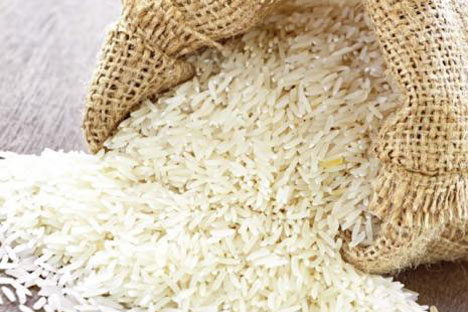
Russia imported 81,900 tonnes of rice in January-August 2012. Source: Press Photo
Russian raw rice is enjoying unprecedented demand from exporters and Russia is on its way to setting an all-time rice export record. Export supplies this year are already 60 percent above the 2011 level and foreign buyers have contracted purchases of another 100,000 tonnes of rice. Export helps keep domestic prices at a reasonable level and allows domestic rice growers to make profits, experts note.
Exporters have boosted their demand for Russian raw rice, Irina Glazunova, Deputy General Director of the Institute for Agricultural Market Studies, told RBC-Daily. “Big companies have already contracted exports of about 100,000 tonnes with Turkey as the main buyer.” Other big importers of Russian rice are Tajikistan and Turkmenistan.
Russia has also begun supplying rice directly to Egypt and Libya this year, says Mikhail Radchenko, Executive Director of non-commercial partnership Southern Rice Union. “If this trend continues until the end of the year, rice exports from the Krasnodar Region will reach an all-time high,” Radchenko says. Russia may export up to 20 percent of its raw rice during the 2012/13 season, according to Glazunova.
According to the Southern Rice Union, Russia imported 81,900 tonnes of rice in January-August 2012, which represents a decline of 23.4 percent year-on-year, while exports soared by 58.7 percent during the same period, to reach 151,400 tonnes.
By September 25, rice had been threshed from slightly more than 50 percent of all areas under this crop in Russia, including 69.8 percent in the Krasnodar Region. Rice production has reached 631,000 tonnes so far in 2012, including 592,000 tonnes in the Krasnodar Region, Glazunova said with reference to the Agriculture Ministry. Last year, rice production had reached 429,000 tonnes by the same date, including 410,000 tonnes in the Krasnodar Region.
Radchenko attributes the growing demand from foreign buyers to several factors: improvement in quality, a lower harvest in Egypt, which cultivates a similar kind of rice to that grown in Russia, and the depreciation of the rouble vis-à-vis the US dollar, which made deliveries from Russia more attractive to foreign partners.
Because Egypt was limiting its exports owing to the unstable internal political environment, Russian rice has enjoyed a stronger demand globally, says Oksana Linnik, Commercial Director at Angstrem. “We expect Egypt to resume active exports on October 1, however, if restrictions remain in place there, export supplies of Russian rice will be huge”, she says.
Because of the high demand from exporters, domestic stocks of raw rice are now at an all-time low, Radchenko says. Last year, carry-over stocks were around 62,000 tonnes in early September, when Russia starts harvesting rice, but this year, stocks were as low as 3,000-4,000 tonnes. There will be no deficit, though, market players say. Russia grows more rice than it can consume, Linnik asserts. Last year’s harvest amounted to 1.05 million tonnes and, this year, the rice harvest is projected at 1 million tonnes. “The growing exports prevent a drop in domestic prices and shore up the profitability of rice growing, which remains positive”, Radchenko says.
Glazunova does not rule out the possibility that, because of the strong demand from exporters, the traditional autumn reduction in prices will be short-lived and market prices will start growing soon. According to the Southern Rice Union, raw rice is currently available at 9.5-10.2 roubles per kilo, VAT included, in the Krasnodar Region.
The full version of the article was published in Russian in RBC Daily.
All rights reserved by Rossiyskaya Gazeta.
Subscribe
to our newsletter!
Get the week's best stories straight to your inbox